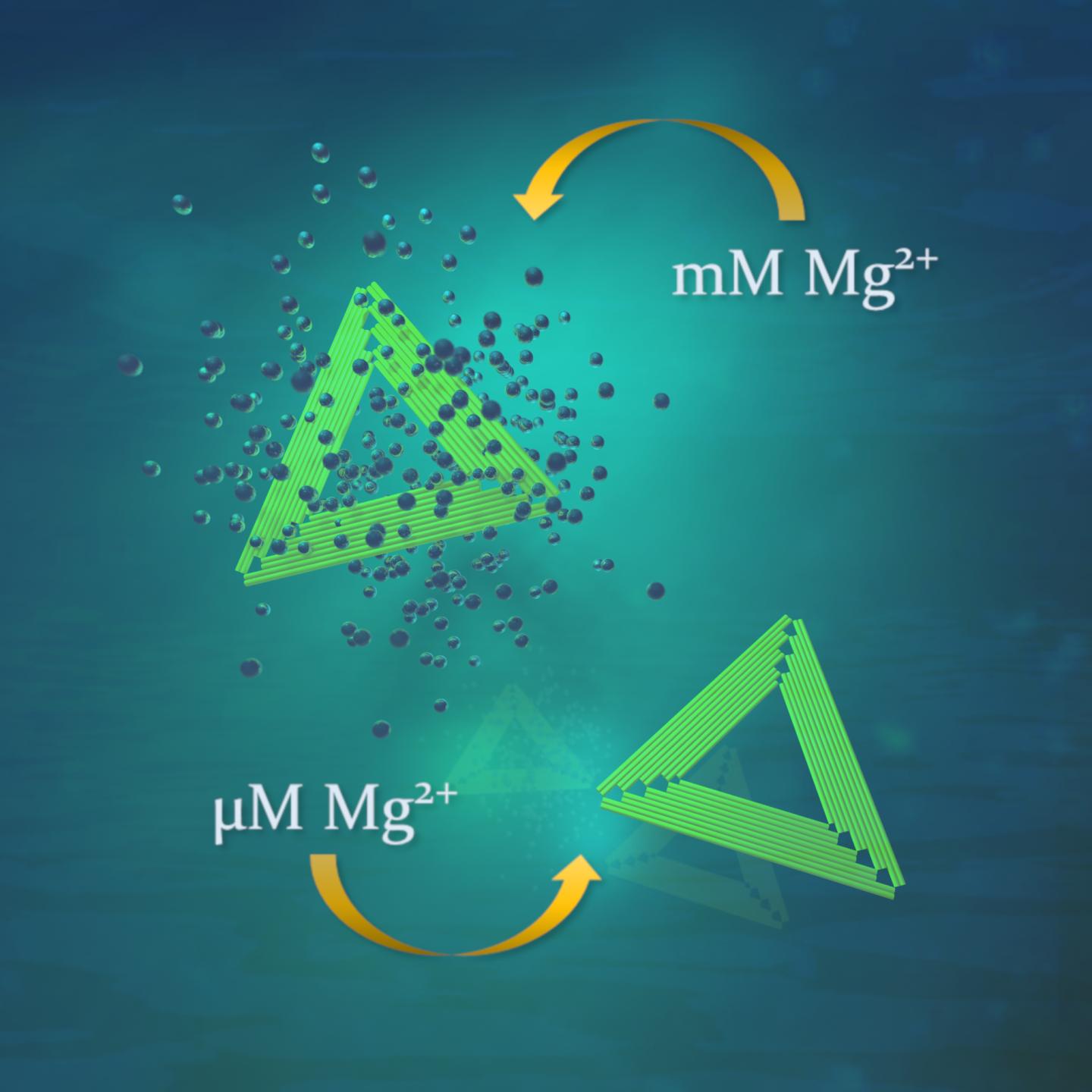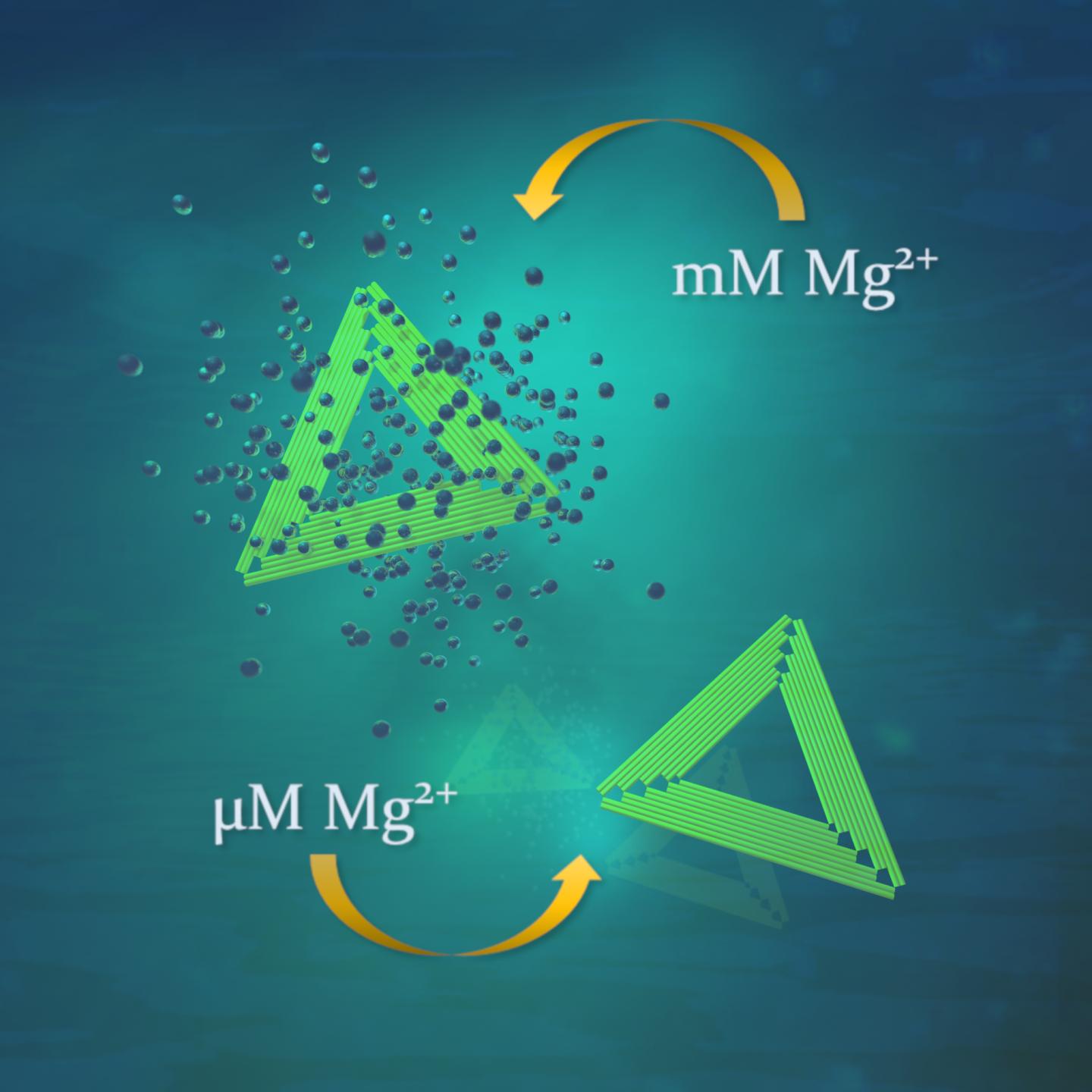
Credit: Boxuan Shen and Veikko Linko/Aalto University
The DNA origami technique is a widely used method for making complex, yet well-defined nanostructures, with applications in biophysics, molecular biology, as well as drug and enzyme delivery. A major challenge, however, has been in achieving long-lasting stability under the conditions required for these applications.
Until now, the technique has required high concentrations of magnesium well above those found in the human body.
"Conventional DNA origami assembly requires levels of magnesium easily 10-30 times as high as those in normal physiological conditions. With our method, we can go below one thousandth of the minimum magnesium concentration previously reported," says Adjunct Professor Veikko Linko from Aalto University, who co-led the study with Dr. Adrian Keller of Paderborn University.
Key to the gentle buffer exchange method developed by the researchers is removing free ions from the buffer solution efficiently but not all residual magnesium from the nanostructures. Previous research has identified low magnesium levels as one of the most critical parameters that reduce DNA origami stability in cell culture media.
"We found – quite surprisingly – that just Tris and pure water worked well with low-magnesium levels for all types of structures," explains Linko.
Tris is a common component of buffer solutions used, for example, in biochemistry applications. Findings show that phosphate-based buffers with a high enough concentration of sodium or potassium can also stabilize DNA origami.
The study investigated the stability of quasi-one-dimensional, two-dimensional and three-dimensional DNA origami objects. The nanostructures achieved using the technique showed strong structural integrity, maintained even for extended periods of time.
"We can store the structures in low-magnesium conditions for weeks and even months without seeing any structural defects. These findings might pave the way for a plethora of biomedical uses that were previously thought impossible, as for example fluorophores and many enzymes are sensitive to magnesium levels," envisions Linko.
The researchers further observed that the more tightly packed the helices in their DNA objects were, the more sensitive they were to the environment in low-magnesium conditions. This suggests that the stability of DNA origami can be enhanced through the optimization of the design procedure.
The results have been published in Angewandte Chemie International Edition and the article has been selected as a "Hot Paper".
###
Media Contact
Veikko Linko
[email protected]
358-456-739-997
@aaltouniversity
http://www.aalto.fi/en/
Original Source
http://www.aalto.fi/en/current/news/2018-05-29-005/ http://dx.doi.org/10.1002/acie.201802890




